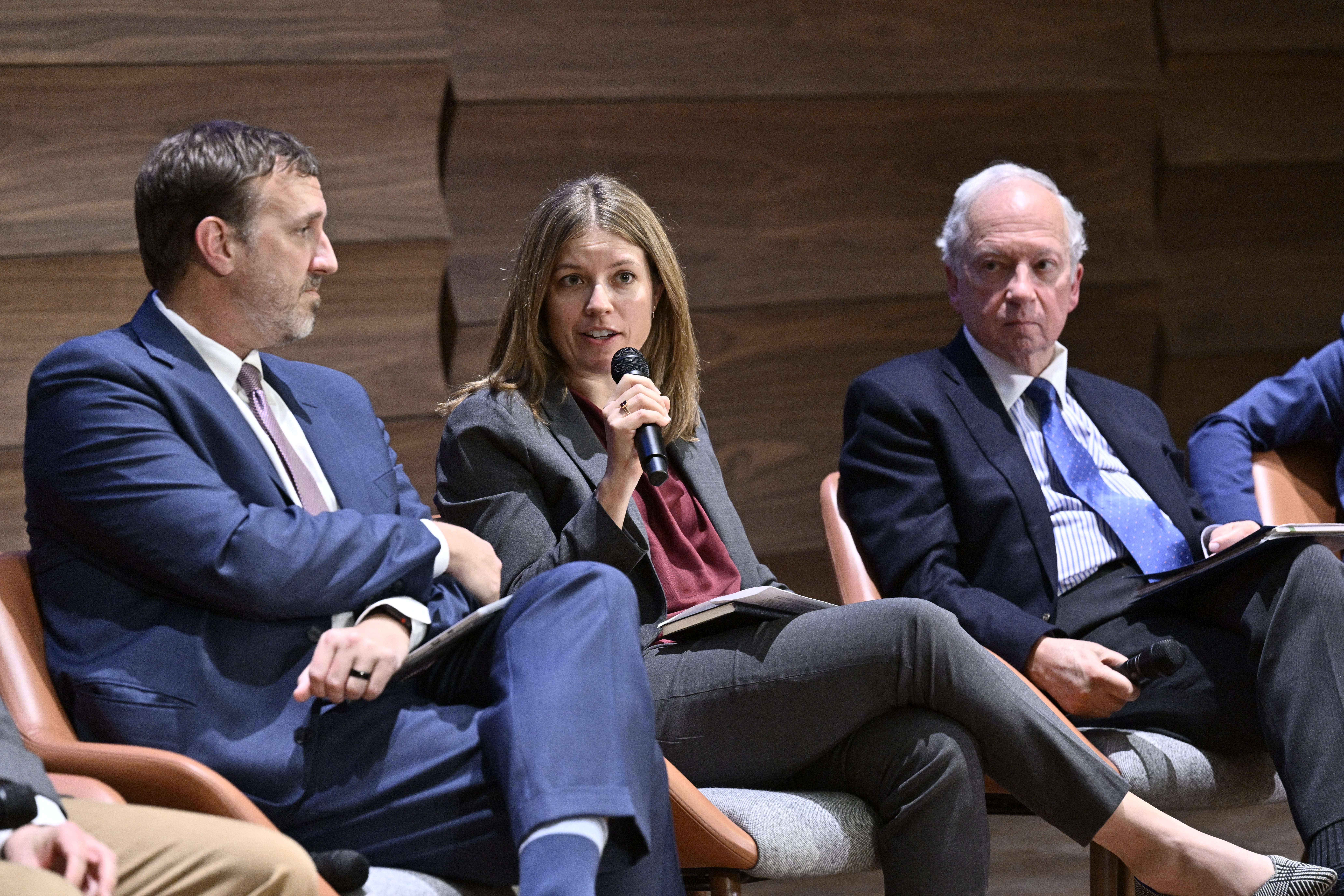5 things to know about the future of tech
Emerging technologies are rapidly changing our world, presenting both challenges and opportunities

- Image credit Kaveh Sardari
Nearly 50 years ago, Intel introduced the first microprocessor, driven by a single semiconductor chip. Since then, advances in chip design and manufacturing have enabled the development of even smaller and more powerful devices that today are integrated into and run much of the technology we use on a daily basis, including artificial intelligence (AI).
Top science and technology experts came together on Nov. 30 at event hosted by the Johns Hopkins School of Advanced International Studies (SAIS) at the Hopkins Bloomberg Center to discuss this rapidly changing landscape and provide insight into the challenges and opportunities that emerging technologies present.
“We’re now modeling the representation of the way that atoms interact at a quantum level but doing it with sufficient speed that we can actually make movies of what they’re doing,” said Paulette Clancy, an engineering professor at Johns Hopkins University. “That just wasn’t possible a few years ago.”
Here are five key takeaways from the event’s panel discussions about semiconductors and AI:
- It’s difficult to know how people will interact and react to AI on a large scale.
People react differently when an autonomous car makes a mistake, even though millions of car accidents are caused by humans each year. But an even more interesting aspect of this issue is that simply interacting with AI can change the way people behave, said Mark Dredze, a Johns Hopkins computer science professor. And that in turn changes how AI may react, creating a feedback loop that can be positive, negative, or neutral.
2. U.S.-China relations are incredibly important when it comes to semiconductors.
The U.S. decision to cut China off from advanced chips does not change the fact that China remains the largest semiconductor market in the world. “The challenge is for the U.S. government to have a broader and more comprehensive understanding of the entire semiconductor supply chain across the entire globe and to have a deeper understanding of how that affects things,” said Ling Chen, assistant professor at SAIS.
3. AI “hallucinations” can be difficult to detect.
When an AI model “hallucinates,” it is essentially trying to find the most unsurprising response to the prompt it received. In other words, it is making an educated guess. Unfortunately, that guess can include incorrect information, but because it seems plausible, some people will take it as fact without knowing they are being misled, said Henry Farrell, a professor of international affairs at SAIS.
4. The development of emerging technologies will always come with risks.
One of the challenges to advancing emerging technologies in the U.S. is working through how to manage and mitigate risk as much as possible while still capitalizing on the benefits. “People want this to be costless, that we can have our cake and eat it, too,” said Melissa Griffith, a lecturer in technology and national security at SAIS. “This is about managing loss and managing risk and doing that in the least painful way possible but recognizing that the metric for success cannot be zero pain.”
5. AI is not going to cause human extinction.
Just ask Rama Chellappa, a Bloomberg Distinguished Professor at the Johns Hopkins Institute for Assured Autonomy, who has worked in the field for more than 40 years. “All the characters in Seinfield are flawed. But when you watch them, it still brings you some happiness,” he says. “AI is like a friend or a bunch of friends with flaws. We all have friends—some are deeply flawed, some are OK—but we figure out how to work with them. We all have friends who just make stuff up. Just think of AI as some of your friends, and then you will be more friendly to AI and not be afraid of it.”